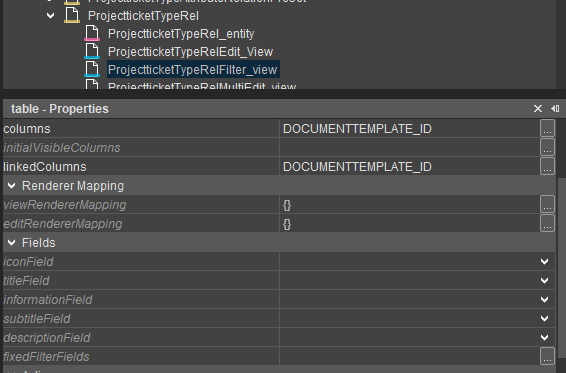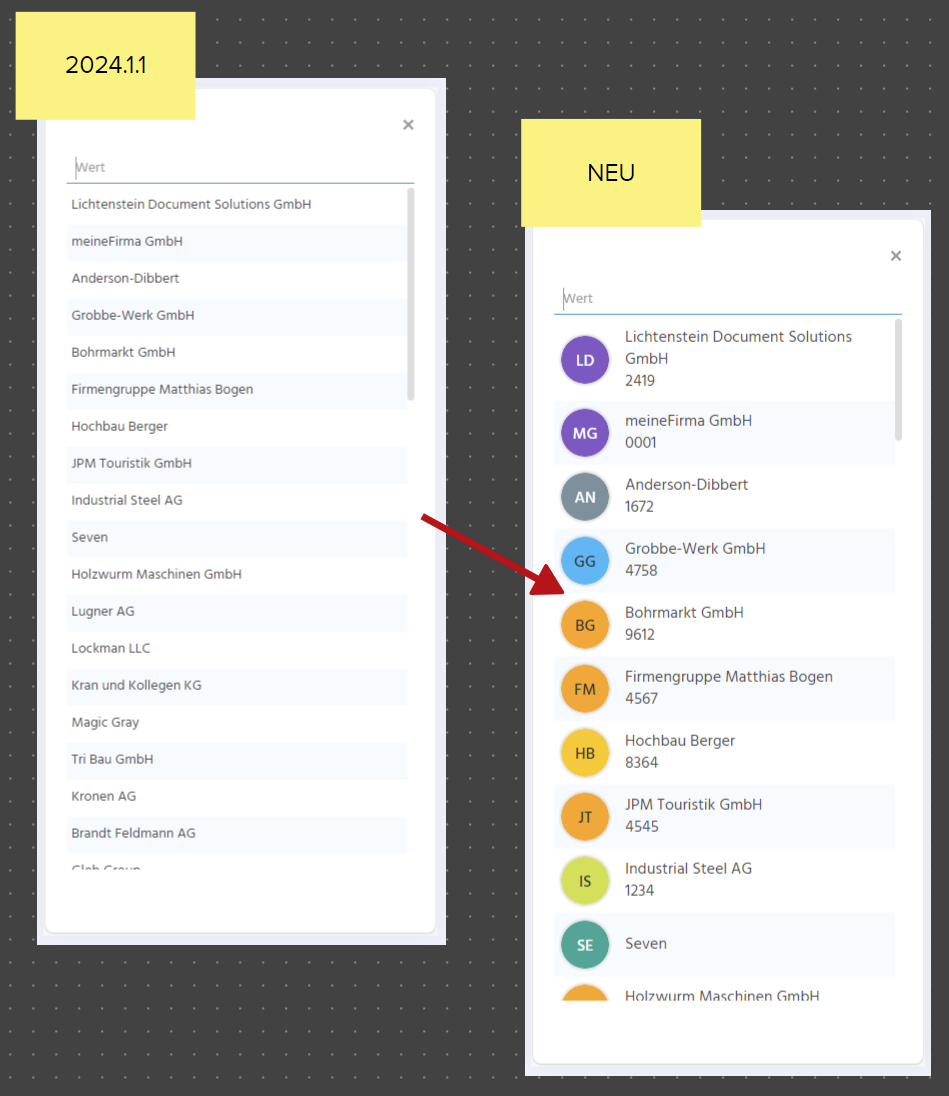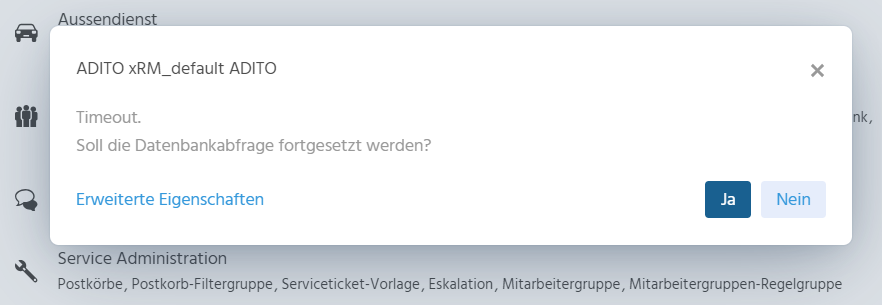2024.1.2 to 2024.2.0
1. Lookup Views: Context-based rendering on Mobile
What changed
Starting with version 2024.2.0, the system no longer forces the default lookup view on mobile devices. Instead, it evaluates the lookup-view configured in the current context.
Why it matters
The default view only shows the contentTitle. By using a context-specific view, developers can provide a richer mobile experience with fields like iconField, titleField, and subtitleField.
Recommended actions
If no specific lookup-view is defined, the system falls back to the default view. To keep using the default, remove the lookup-view setting from the context configuration or implement a view with the ListViewTemplate.
 Figure: View template configuration without any properties
Figure: View template configuration without any properties
 Figure: Comparison between default and configured templates on mobile
Figure: Comparison between default and configured templates on mobile
Make sure each mobile context defines a suitable lookup view to avoid display issues.
2. Database Requests: New "systemDBRequestWarnTimeout" option
What changed
A new system property systemDBRequestWarnTimeout is now available in addition to systemDBRequestTimeout.
Why it matters
After the specified systemDBRequestWarnTimeout, a dialog prompts the user to continue or abort the database request. The option "Forever" has been removed. If continued, the request will be forcibly terminated once systemDBRequestTimeout is reached.
Recommended actions
Configure both values in the Designer or customizing to control user experience during long-running queries. If no values are provided, default values are used:
systemDBRequestWarnTimeout: 10 secondssystemDBRequestTimeout: 30 seconds
Figure: Timeout settings
 Figure: Prompt displayed after warn timeout
Figure: Prompt displayed after warn timeout
3. question.showDialog / closeDialog: Deprecated
What changed
The functions question.showDialog() and question.closeDialog() are deprecated and will be removed in version 2025.0.0.
Why it matters
These functions are no longer recommended and are unused in the current XRM basic project.
Recommended actions
Replace deprecated function calls with supported alternatives before version 2025.0.0.
4. AuthenticationProvider: "scope" is now mandatory
What changed
As of version 2024.2.0, the scope field must be explicitly set in AuthenticationProvider aliases.
Why it matters
Previously, an empty scope would apply all application permissions. This is no longer supported unless only the openid permission is needed.
Recommended actions
Set a specific scope if your API usage requires additional permissions (e.g., in getUsernameFromAccessTokenProcess for CUSTOM providers).
5. netMultipart Library: Multipart/form-data API support
What changed
The new netMultipart system library enables working with REST APIs that require multipart/form-data.
Why it matters
This library simplifies the process of sending multiple content types in a single request, especially useful for document generation services and similar integrations.
Recommended actions
Use netMultipart to construct binary and text multipart entities. See the example below.
Example usage
import { net, auth, logging, fileIO, util, netMultipart } from "@aditosoftware/jdito-types";
// Load file content for multipart
const docBinary = fileIO.getData("c:/temp/template.docx", util.DATA_BINARY, "UTF-8");
const jsonData = fileIO.getData("c:/temp/data.json", util.DATA_TEXT, "UTF-8");
// Construct multipart parts
const partDoc = netMultipart.createBinaryMultipart("template", docBinary, "application/vnd.openxmlformats-officedocument.wordprocessingml.document", "template.docx");
const partData = netMultipart.createTextMultipart("data", jsonData);
// Prepare REST configuration
const authConfig = auth.createConfigForNoAuth();
const restConfig = net.createConfigForRestWebserviceCall();
restConfig
.actionType(net.POST)
.url("https://doc-generator.example.com/api/v1/generate")
.dataTypeSend("multipart/form-data")
.dataTypeAccept("application/vnd.openxmlformats-officedocument.wordprocessingml.document")
.requestEntityMultipart(null, [partDoc, partData]);
// Execute request
try {
const response = net.callRestWebservice(restConfig, authConfig);
fileIO.storeData("c:/temp/generated.docx", response, util.DATA_BINARY, false);
logging.log("Document generated and saved as c:/temp/generated.docx");
} catch (e) {
logging.log("Error during document generation:");
logging.log(e);
}